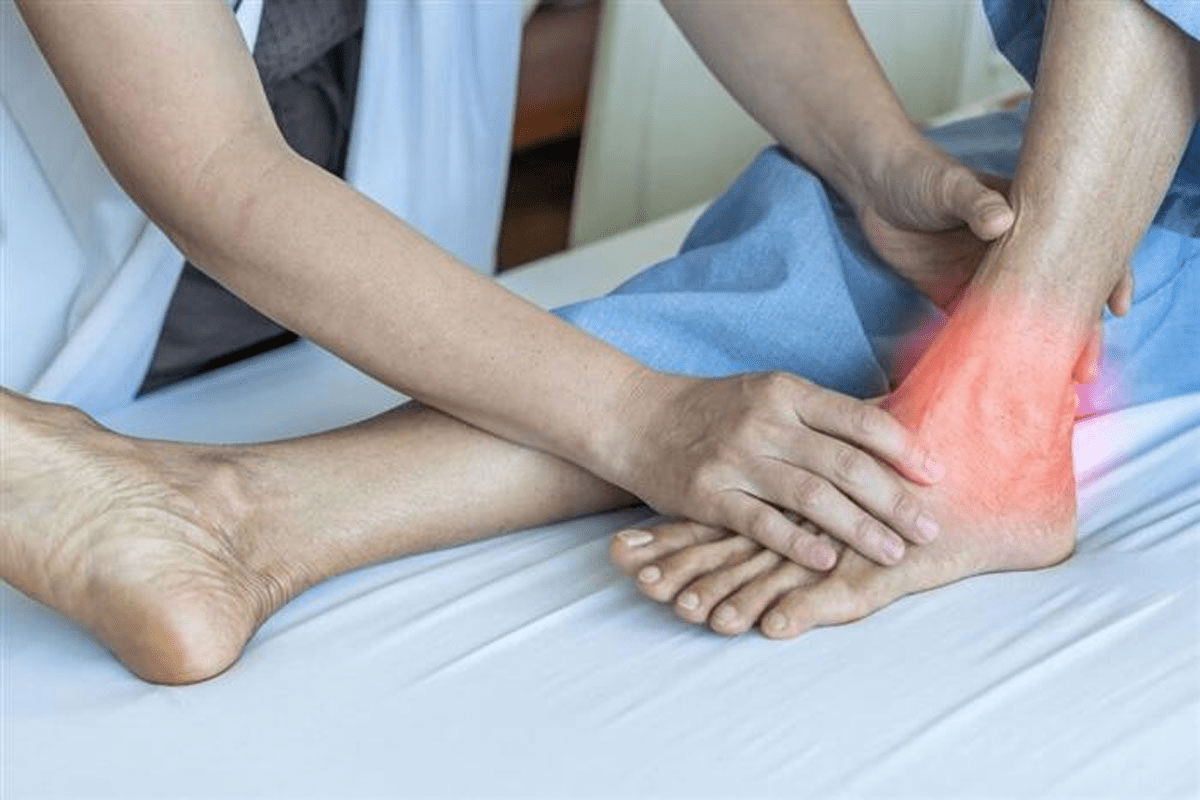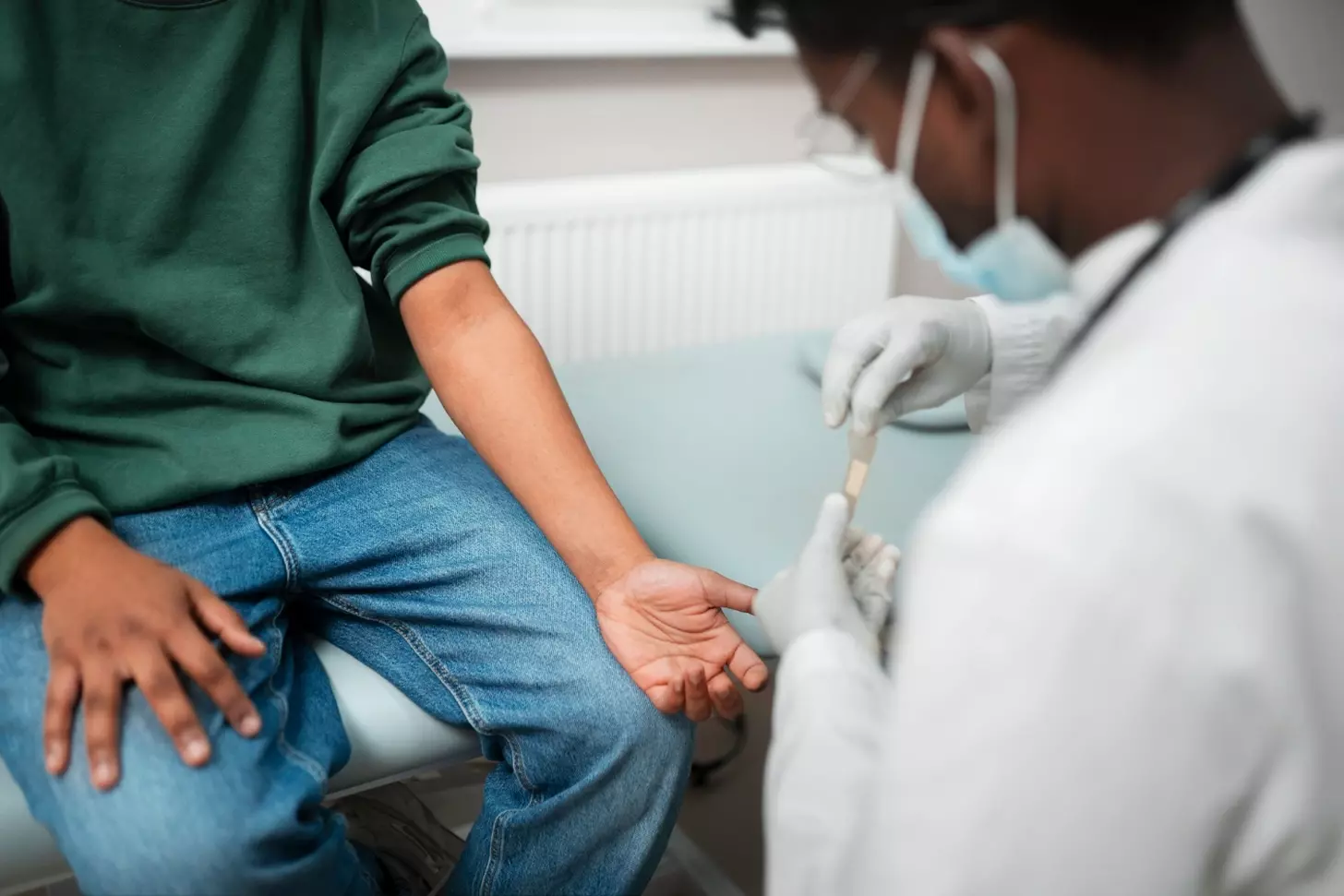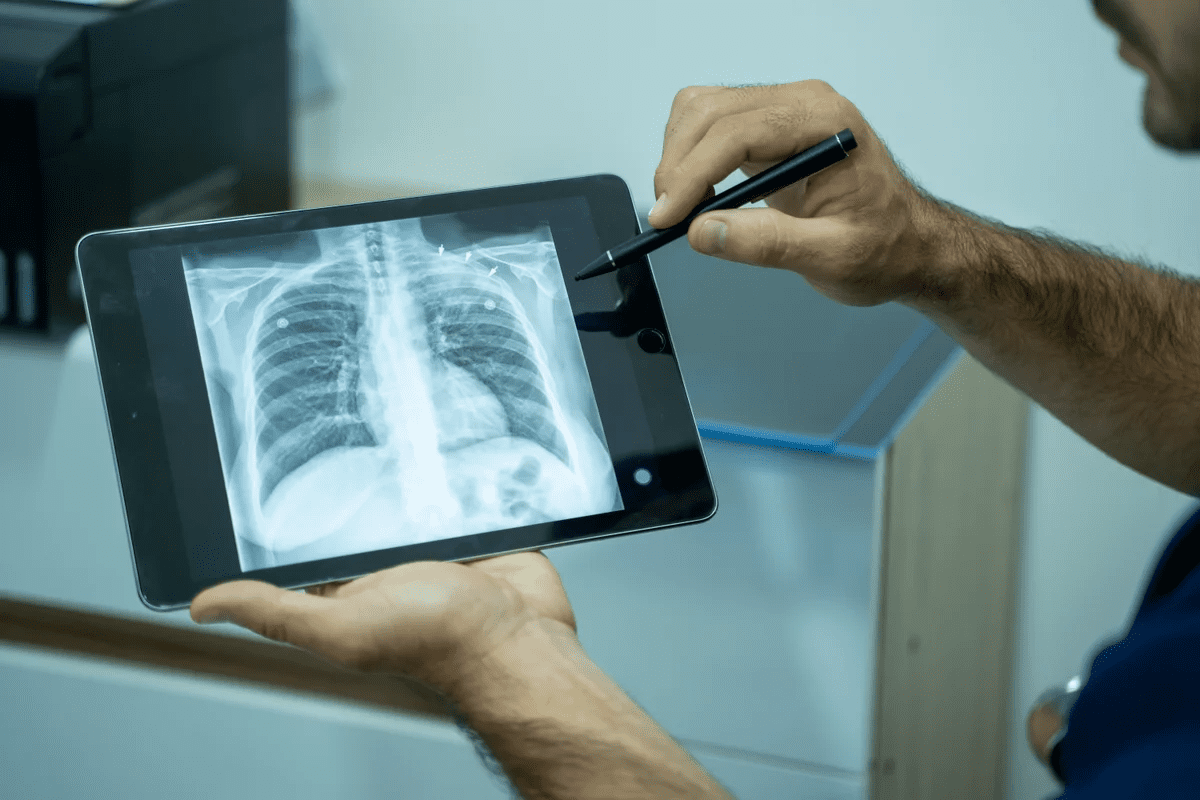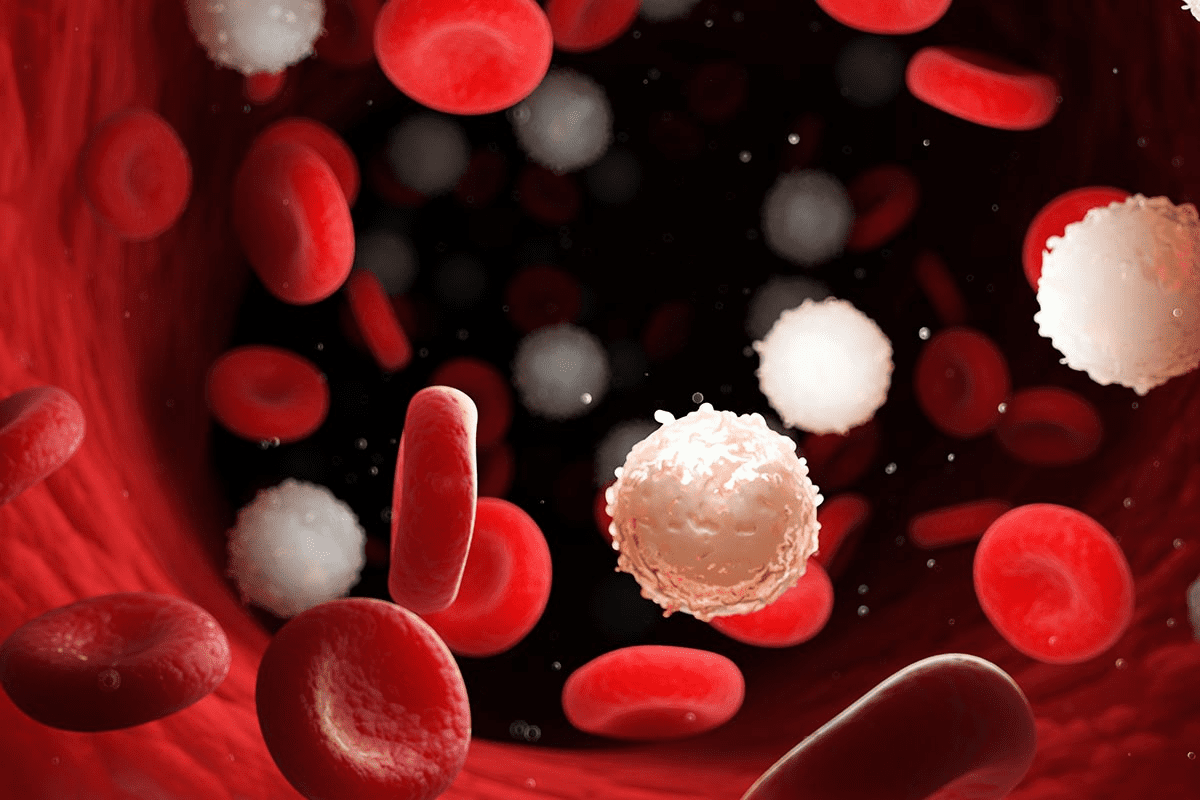Last Updated on November 27, 2025 by Bilal Hasdemir
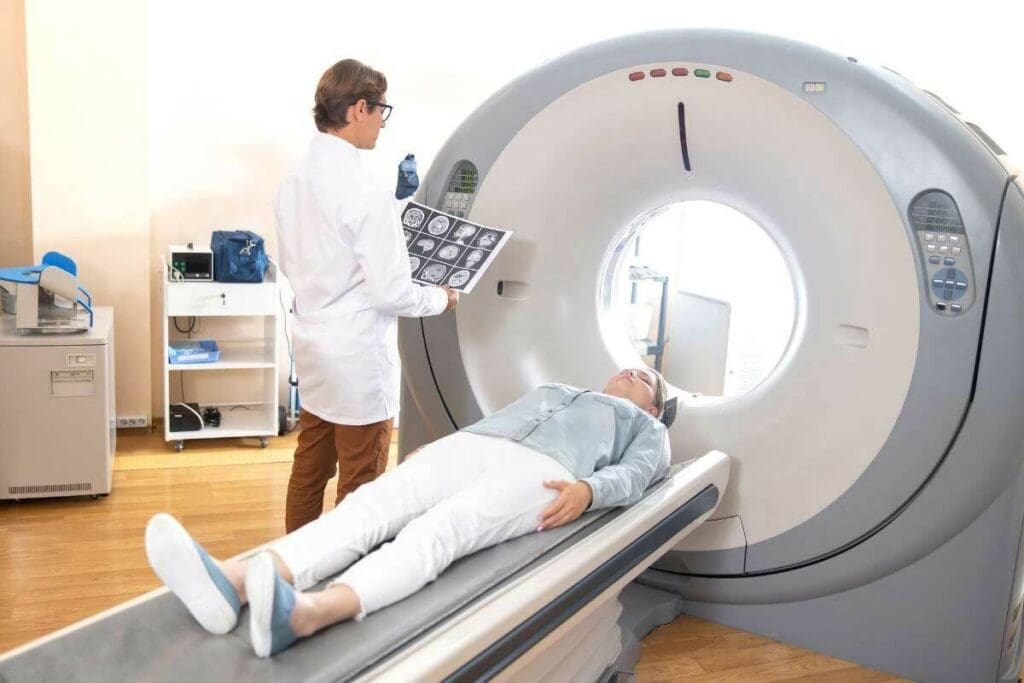
Getting multiple CT scans in a short time can worry patients — for example, having 4 CT scans in a month may raise concerns about radiation exposure. At Liv Hospital, we tackle these worries with the right info and expert advice. CT scans use X-rays to make detailed 3D images of the body’s inside. They help doctors diagnose better but also expose patients to radiation, slightly raising cancer risk over time.
We look into the safety of having many CT scans. We talk about the risks, current rules, and medical tips to help and reassure you.
Key Takeaways
- CT scans are key for diagnosis but involve radiation exposure.
- Having many CT scans can slightly raise cancer risk.
- Medical reasons and rules help lower risks.
- Guidelines and expert advice are key for patient safety.
- Liv Hospital puts patient care and safety first.
Understanding CT Scans and Their Medical Purpose

CT scans are key in modern medicine, giving detailed views of what’s inside us. At Liv Hospital, we follow the latest standards and ethics for top-notch care. CT scans help doctors spot and treat many health problems.
What Is a CT Scan and How Does It Work?
A CT scan uses X-rays to show what’s inside your body. It lets doctors see organs, tissues, and blood vessels clearly. The machine moves around you, taking pictures from all sides. Then, it makes a detailed image from these pictures.
Common Medical Reasons for CT Imaging
CT scans are used for many medical reasons, including:
- Diagnosing injuries and internal bleeding
- Detecting cancers and monitoring their progression
- Guiding surgical procedures and interventions
- Evaluating vascular diseases and conditions
- Assessing complex fractures and internal injuries
These uses show how important CT scans are in today’s healthcare.
Diagnostic Benefits of Computed Tomography
CT scans offer many benefits. They give high-resolution images that can spot problems not seen on regular X-rays or ultrasounds. They’re great in emergencies for quick, accurate diagnoses. Also, they help find diseases early, which can lead to better treatment and outcomes.
Knowing how CT scans work and their benefits helps both patients and doctors make better choices for diagnosis and treatment.
Radiation Exposure from CT Scans: The Basics

To understand the risks of CT scans, knowing the radiation they emit is key. CT scans use X-rays to show detailed images inside the body. This process involves exposure to ionizing radiation.
Ionizing radiation has enough energy to remove tightly bound electrons from atoms, creating ions. This type of radiation can damage DNA in cells, possibly leading to cancer. Yet, the radiation from a CT scan is usually considered low.
How Much Radiation Is in a Single CT Scan?
The radiation from a CT scan is measured in millisieverts (mSv). A typical chest X-ray has about 0.1 mSv. A CT scan of the abdomen and pelvis can have around 10 mSv, similar to 3 years of natural background radiation.
Different CT scans expose patients to varying levels of radiation. For example:
- A head CT scan typically involves about 2 mSv of radiation.
- A chest CT scan involves around 7 mSv.
- An abdominal and pelvic CT scan, as mentioned, can be around 10 mSv.
Comparing CT Radiation to Natural Background Exposure
Natural background radiation is the ionizing radiation found in the environment. It’s caused by cosmic rays and radionuclides in the earth. The average annual exposure to natural background radiation is about 3 mSv.
Comparing this to CT scan radiation helps understand the exposure better. For instance, a 10 mSv CT scan is like 3-4 years of natural background radiation. This comparison helps patients and doctors see the relative risk.
Different Types of CT Scans and Their Radiation Levels
The radiation level from a CT scan varies based on the type of scan and body part imaged. Modern CT scanners use the least amount of radiation needed for high-quality images. The dose is adjusted based on patient size and the clinical question.
| Type of CT Scan | Typical Radiation Dose (mSv) | Equivalent Natural Background Exposure |
| Head CT | 2 | 8 months |
| Chest CT | 7 | 2.3 years |
| Abdomen and Pelvis CT | 10 | 3.3 years |
Cumulative radiation exposure from multiple CT scans can slightly increase the lifetime risk of cancer. Knowing the radiation levels of different CT scans is key for healthcare providers and patients to make informed decisions about imaging.
Is Having 4 CT Scans in a Month Medically Justified?
In some cases, getting multiple CT scans in a month is okay. Doctors decide this when the scans help more than they harm. This is because of the risks from radiation.
Clinical Scenarios Requiring Multiple Scans
There are times when you might need more than one CT scan. For example, after a bad injury or when you’re very sick. These scans help doctors keep track of your health and change treatment plans if needed.
Another reason is for complex conditions like cancer. Doctors use CT scans to see how well treatments are working. They also check for any changes in the condition.
Emergency vs. Planned Multiple Imaging
When and why you get CT scans matters a lot. In emergencies, doctors need quick answers. So, they might do more scans to understand your situation fast.
But for planned scans, things are different. These are set up ahead of time as part of a bigger plan. It’s important to make sure these scans are really needed.
The Principle of Medical Necessity
The idea of medical necessity guides whether you need CT scans. It means doing tests only when they’re really needed. This helps avoid unnecessary risks.
Doctors look at the good and bad of doing more scans. They think about your health history, current state, and other ways to diagnose you.
In the end, talking to your doctor is key. They can decide if more scans are right for you based on your situation and what science says.
Scientific Research on Multiple CT Scan Risks
Recent studies have highlighted the risks of getting multiple CT scans in a short time. As CT imaging becomes more common, it’s key to know how radiation builds up over time.
Current Studies on Cumulative Radiation Exposure
Research on the effects of radiation from multiple CT scans is growing. While one scan is low-risk, many scans can increase that risk. For example, a study in JAMA Internal Medicine found that many CT scans in the U.S. could lead to a lot of cancers.
The 2.7-12% Relative Increase in Cancer Risk
Studies show that getting many CT scans can raise cancer risk. The risk increase is between 2.7% and 12%. This depends on how many scans you have, the radiation dose, and your age.
Interpreting Statistical Risk in Real-World Context
Understanding the risk of multiple CT scans is complex. While the risk is higher, it’s usually small for most people. To better understand, we’ve made a table comparing CT scan radiation to other sources.
| Source of Radiation | Equivalent Dose (mSv) | Comparison |
| Single CT Scan | 2-10 | Equivalent to 1-5 years of natural background radiation |
| Four CT Scans | 8-40 | Equivalent to 4-20 years of natural background radiation |
| Chest X-ray | 0.1 | Equivalent to a few days of natural background radiation |
This table helps patients and doctors understand the risks and benefits of CT scans. It’s about weighing the need for scans against the possible risks.
Radiation Safety Principles in Medical Imaging
Medical imaging technology keeps getting better, and so does our focus on radiation safety. We make sure patients get the least amount of radiation needed for clear images. This is done by following key safety rules.
ALARA Principle: As Low As Reasonably Achievable
The ALARA principle is key in keeping patients safe from radiation in medical imaging. It says we should use as low as reasonably achievable doses for clear images. This rule helps doctors choose the best imaging methods to lower radiation.
Liv Hospital follows this rule closely. We use the latest, best practices from around the world. This ensures our patients get the best care with the least radiation.
Dose Optimization Techniques
Reducing radiation exposure is a big goal. We use many ways to do this. These include adjusting scanner settings and using shielding.
We also use new image-making algorithms. These steps help lower radiation doses without losing image quality. We keep our methods up to date to help our patients.
How Modern CT Scanners Minimize Radiation
Today’s CT scanners have new features to cut down radiation. They have better detectors and scan faster. They also have systems to control radiation doses.
These changes help doctors make clear images with less radiation. We use the latest CT scanners. This way, we ensure our patients get the best care with the least radiation.
Special Considerations for Vulnerable Populations
Using CT scans on vulnerable groups needs careful thought. We must weigh the benefits against the risks, mainly for those more exposed to radiation.
Children and Adolescents
Children and teens are very sensitive to radiation. Their bodies are more likely to be harmed by it. They also have more years to see any effects. So, we must be very careful with CT scans for them.
When CT scans are needed for kids, we use dose optimization techniques. We adjust the scanner for their size and age. We also look for non-radiation imaging options like ultrasound or MRI.
Pregnant Women
Pregnant women are another group that needs special care. CT scans are usually avoided because of the risk to the fetus. But, sometimes the benefits outweigh the risks. In these cases, we take steps to reduce fetal exposure and look for other imaging options.
If a CT scan is needed for a pregnant woman, we carefully consider the risks and benefits. We talk about it with the patient. We also use lead shielding to protect the fetus from radiation.
Patients with Chronic Conditions Requiring Frequent Imaging
People with chronic conditions often need many imaging studies, including CT scans. This is to monitor their condition and adjust treatments. We aim to balance the need for imaging with the risks of radiation.
To do this, we use imaging protocols that reduce radiation while keeping image quality. We also explore other imaging options. We work closely with patients to ensure they get the imaging they need while keeping radiation exposure low.
Alternatives to Multiple CT Scans
Using other imaging methods can reduce the need for many CT scans. This is great for people who need scans often because of health issues. It helps avoid too much radiation.
MRI as a Non-Radiation Alternative
Magnetic Resonance Imaging (MRI) is a top choice for detailed images without radiation. It uses a strong magnetic field and radio waves. This makes it perfect for many health checks.
For soft tissue like muscles and nerves, MRI is the best. It can spot different tissues well. This helps doctors diagnose many health problems.
Ultrasound Imaging Options
Ultrasound uses sound waves to see inside the body. It’s great for looking at organs near the surface, like the gallbladder and thyroid. It’s safe and doesn’t use radiation.
Ultrasound is also good because it shows things in real-time. This is helpful for watching the heart and blood vessels move. It’s also cheaper than some other scans.
When Alternative Imaging Is Not Suitable
Even though MRI and ultrasound are good choices, CT scans are sometimes better. CT scans are quicker and better for emergencies. They’re fast for checking injuries.
CT scans are also better for some tests, like biopsies. They help doctors see lung tissue well. In these cases, the benefits of CT scans are more important than the radiation risk.
Medical Guidelines on CT Scan Frequency
Radiology groups worldwide have set guidelines for when to use CT scans. These rules help doctors decide when scans are needed and how often. They aim to make sure scans are helpful and safe for patients.
Professional Recommendations from Radiology Organizations
Groups like the American College of Radiology (ACR) are key in setting these guidelines. The ACR’s Appropriateness Criteria give detailed advice on when to use CT scans for different health issues. These guidelines are updated often to keep up with new research and technology.
The ACR says CT scans should only be done when really needed. They should also use the least amount of radiation possible. This follows the As Low As Reasonably Achievable (ALARA) principle to keep patients safe.
Hospital Protocols for Multiple Scans
Hospitals have their own rules for patients needing many CT scans. These rules follow national and international guidelines. For example, Liv Hospital checks each scan request carefully to make sure it’s needed and safe.
Hospital rules usually include:
- Checking past scans to avoid repeating them
- Only doing scans if they’re really needed
- Using the best scan settings to lower radiation
International Standards and Practices
There are global standards for using CT scans. Groups like the International Commission on Radiological Protection (ICRP) offer advice on safety and proper use. These guidelines help make practices the same everywhere.
In countries with top-notch healthcare, rules require scans to be justified and done safely. For example, the Medicare Imaging Demonstration in the U.S. tried to cut down on unnecessary scans by using the right criteria.
Patient Advocacy: Questions to Ask Your Doctor
Knowing about CT scans can change your medical path. It’s key to take charge of your health, mainly with tests like CT scans.
Understanding the Necessity of Each Scan
When your doctor suggests a CT scan, ask why. You might say, “Is there a non-radiation test like an MRI or ultrasound I could have instead?” This helps you grasp your diagnosis and learn about other tests.
Talking about each scan’s need helps you decide wisely. For example, you could ask, “How will this CT scan affect my treatment plan?” This question shows if the scan is really needed for your health.
Discussing Radiation Risk with Healthcare Providers
Radiation risk is a big worry for many with CT scans. It’s important to talk about this with your doctor. Start by asking, “What are the possible risks from this CT scan’s radiation?” This starts a conversation about the scan’s benefits and risks.
Documenting Your Lifetime Imaging History
Keeping a record of your imaging history is smart for managing radiation. Ask your doctor to help you track your scans. Questions like “Can you document this scan in my medical records?” or “How can I keep a record of my lifetime radiation exposure?” start this process.
Being informed and active ensures your doctors consider your whole health history when suggesting tests.
Long-Term Monitoring After Multiple CT Scans
Both patients and healthcare providers should be aware of the need for long-term monitoring after multiple CT scans. If you’ve had several CT scans in a short time, like four in a month, it’s important to have a follow-up plan. This plan helps ensure your health is closely watched.
Follow-up Recommendations
Your healthcare provider will suggest a follow-up plan based on your medical condition after multiple CT scans. This plan might include regular check-ups, more imaging tests, or other procedures. It’s key to stick to this plan to catch any health problems early.
If you’re getting scans for a health issue, talk to your doctor about spacing them out. This can reduce radiation exposure while keeping you well-informed.
Signs and Symptoms to Watch For
It’s important to know how your body reacts to CT scans and treatments. Look out for unusual signs or symptoms, like persistent pain, unexplained fatigue, or health changes. If you notice any, tell your healthcare provider right away.
Some symptoms to watch for include:
- Unusual fatigue or weakness
- New or worsening pain
- Changes in skin or hair
- Unexplained weight loss or gain
Balancing Vigilance and Unnecessary Anxiety
It’s vital to be careful about your health after multiple CT scans but not let anxiety control your life. Maintaining a balance between being informed and not worrying too much is important.
Talk to your healthcare provider about your worries. Ask how you can monitor your health well without overdoing it. Being proactive and informed can help prevent complications and ensure the best results.
Conclusion: Balancing Diagnostic Benefits and Radiation Risks
We’ve looked into the ups and downs of getting multiple CT scans close together. These scans are key for doctors to diagnose and treat, but they also mean more radiation. This radiation can raise the chance of getting cancer.
Even though CT scans carry risks, their benefits often outweigh them. Doctors use strict rules to keep radiation low while keeping images clear. It’s important for patients to know why they need each scan and talk to their doctors about any worries.
By weighing the good and bad of CT scans, we can help patients get the best care. This means thinking carefully about each scan, using the right imaging methods, and teaching patients. As we improve medical imaging, our aim is to keep patients safe and well-cared for.
FAQ
What are the risks associated with undergoing 4 CT scans in a month?
Getting multiple CT scans can expose you to radiation. This might slightly increase your cancer risk. But, the exact risk depends on several factors like the radiation dose and your health.
How much radiation is emitted during a CT scan?
The radiation from a CT scan varies. It depends on the scan type and body part. On average, it’s 2-10 millisieverts (mSv), which is more than a chest X-ray.
Are there any medical guidelines governing the frequency of CT scans?
Yes, there are guidelines for using CT scans. Radiology groups and hospitals set these rules. They help reduce radiation while ensuring patients get the imaging they need.
Can alternative imaging modalities like MRI or ultrasound replace CT scans?
Sometimes, MRI or ultrasound can replace CT scans, mainly to avoid radiation. But, CT scans are often preferred for emergencies or detailed internal images.
How can patients minimize their radiation exposure from CT scans?
To reduce radiation, make sure each CT scan is necessary. Use the lowest radiation dose possible. Also, look for alternative imaging when you can.
What is the ALARA principle, and how does it relate to CT scans?
The ALARA principle means using the least amount of radiation needed for good images. Modern CT scanners follow this to keep doses low.
Are there any special considerations for vulnerable populations, such as children or pregnant women, when it comes to CT scans?
Yes, children and pregnant women need extra care with CT scans. Doctors must weigh risks and benefits carefully. They aim to use the least radiation possible.
What questions should patients ask their doctors about CT scans?
Ask your doctor if each CT scan is really needed. Discuss the risks of radiation and if there are other imaging options. Also, ask about your imaging history and future needs.
How can patients maintain a record of their lifetime imaging history?
Keep track of all your imaging tests, including CT scans and MRIs. This helps doctors make better decisions for future tests.
What are the signs and symptoms that patients should watch for after undergoing multiple CT scans?
After many CT scans, watch for unusual signs like fatigue, hair loss, or skin redness. These are rare. Always follow up with your doctor as advised.
Reference
- Hinshaw, J. L., & Hara, A. K. (2020). Radiation doses from head, neck, chest and abdominal CT examinations: Need for dose optimization. Radiology and Oncology, 54(4), 407-420. https://pmc.ncbi.nlm.nih.gov/articles/PMC7837727/


